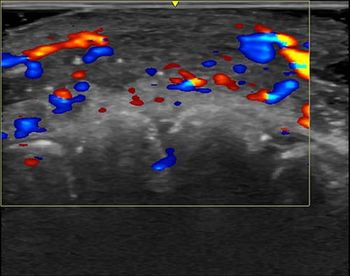
German companies want streamlined healthcare system
Medical device suppliers hope reform jump-starts industryAs healthcare providers and insurance companies work this summer to reorganize the German healthcare system, medical device manufacturers hope the end results reverse years of sluggish
Medical device suppliers hope reform jump-starts industry
As healthcare providers and insurance companies work this summer to reorganize the German healthcare system, medical device manufacturers hope the end results reverse years of sluggish sales.
Right now, there is a strong division between the outpatient and inpatient hospital sectors. In the outpatient, private-practitioner setting, doctors charge patients a fee for services or they are reimbursed by insurance companies at a flat rate for a particular diagnosis.
In the inpatient, hospital setting, the government introduced a DRG-like system in 1996: Hospitals distinguish between case payments and special payments that don't fall into designated categories, and all other expenses. Case payments and special payments account for 25% of the total costs. The remaining 75% of expenses come from various hospital departments, nursing, and medical charges. Hospitals negotiate with insurance companies, and are reimbursed on a point system.
Germany's health providers and sickness fundsthe German equivalent of U.S. insurance companieswill decide by July if the country should integrate the two systems.
Manfred Beeres, spokesperson for Germany's Federal Association of Medical Device Industry (Bundesfachverband Medizinprodukteindustrie, or BVMed) said that although hospital and outpatient budgets would still be separate, healthcare reform would more fully integrate ambulatory and inpatient care, strengthen the primary-care role of family physicians, introduce a flat-rate payment system in hospitals, and create a technology assessment committee.
German health providers and insurance companies will try to create a new case payment system to cover 100% instead of 25% of costs, said Ed Rozynski, vice president of global strategy and analysis for the Health Industry Manufacturers Association (HIMA) in Washington, DC. The trade organization represents more than 800 U.S. medical device manufacturers and advises its German counterpart.
If the two sides can't come to an agreement, the German parliament will do it for them this fall, Rozynski said. Changes will be fully implemented by 2003.
In addition to this reform, the German parliament will streamline hospital budgets. Currently, a hospital's budget is divided into operating expenses and capital equipment expenses, out of which medical equipment is purchased. The German parliament wants to combine the two budgets.
Healthcare reform is a result of recent changes in Germany's political structure. Elections to the German parliament (Bundestag) two years ago led to a turnover in the German government and brought a new minister of health, Andrea Fischer. Sparking the healthcare reforms, Fischer, a member of the Green Party, canceled measures introduced by the old government that would have increased the financial burden on citizens covered by statutory health insurance, which is approximately 90% of the 80 million Germans.
BVMed says in a report that historically, the incongruous inpatient and outpatient systems has led to a crowded medical device market, heavy price competition causing a ruinous drop in medical device prices, and a sluggish growth rate. In addition, most medical device companies have moved manufacturing to other countries to reduce costs.
BVMed says its members experienced sales growth of only 2.2% last year. Although this organization doesn't represent imaging equipment manufacturers, these companies are experiencing the same sluggish sales.
Siemens is a member of Germany's electrical and electronic manufacturers' association, Zentralverband der Elektrotechnik und Elektronikindustrie. This association has seen sales drop 36% between 1992 and 1996. Current numbers are not available but sales haven't improved, said Karl Schmitt, a public relations spokesperson for Siemens.
There are 120 companies in the organization, all of which manufacture some type of medical imaging equipment.
"From the companies and the association's point of view, there is no rationale for this strict distinction between the two sectors," Schmitt said. "They should merge."
Schmitt said that 36% of Siemen's overall sales are from the U.S., 15% from Germany, and 23% from Western Europe. Schmitt also noted that about 40% of the x-ray systems in Germany are more than 10 years old.
HIMA is proposing a few policy amendments in light of Germany's upcoming changes as well.
Right now, there is a technology assessment committee in the outpatient setting; healthcare reform will bring a technology assessment committee to the hospitals as well, said HIMA's Rozynski. But this doesn't automatically assure that patients will gain more access to new medical equipment, Rozynski said.
"We support technology assessment, but it has to be done in an expeditious, logical fashionas long as (the technology assessment committee) does all of those things with input from (the medical manufacturing) industry. There should be at least one seat at the table for the technology guy," Rozynski said.
Newsletter
Stay at the forefront of radiology with the Diagnostic Imaging newsletter, delivering the latest news, clinical insights, and imaging advancements for today’s radiologists.




























